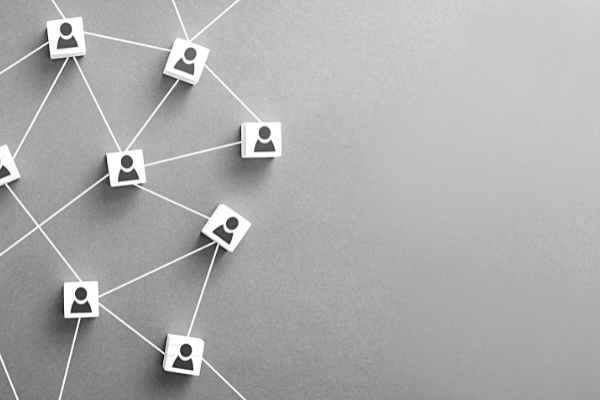“On the marketing front, I tell people it’s a tough pill to swallow, but it takes three to five years to truly transform that area of your bank. And so I want you to think about that … Think also about the average tenure of a marketing director.” -Hunter Young
A financial institution that only focuses on the sprint will lose the marathon. Does your financial brand have a solid plan for three years, five years, and even a decade down the road?
Hunter Young a banking industry innovator with the HIFI Agency who brings clarity to the realm of financial services customer experiences. He talks about taking a longer view of growth when it comes to banking transformation.
The Marathon Is More Than a Metaphor
When Hunter says digital transformation is a marathon, he knows what he’s talking about. He’s a runner currently training to complete a half marathon. During the COVID-19 lockdowns, he found running to be a source of motivation and also a test of his willpower.
“Getting started is the hardest part and I’m gaining momentum,” he says. “But truthfully, one of the things that’s most exciting about being a runner is getting to that event and being surrounded by people and all that energy … COVID has obviously prevented that type of experience for me.”
It’s been a lesson in finding new inspiration and forging new paths. Instead of running with other people, he’s often been using a treadmill in this house. When a race was cancelled or delayed, he found other ways to feel a spirit of community.
There are many parallels between running and pursuing digital growth. In terms of the mindset, there should be a focus on maximizing overall growth potential rather than short-term gains alone.
Plus, a real-life marathon doesn’t always start or end where you expect. That’s certainly true for Hunter himself, who never planned to go into banking as a career.
“I became a banker from the agency world and got heavily involved in both a big bank and a community bank. And so I got to see the brokenness. I got to see the cultural challenges. I got to see the transformation challenges and the strategic challenges.”
In these previous roles, he was always “the young guy in the meeting who knows digital” at banks that otherwise dragged their feet on digital innovation. These experiences inspired him to start his own company and pursue his passion for helping other companies through successful digital transformations, which is the focus of HIFI.
Why Banks Struggle With Digital Transformation
Banks often view digital services as existing in a separate silo from the rest of what they do. They pick someone young and enthusiastic like Hunter and say, “Give him the internet project.” But otherwise, they fail to incorporate digital thinking into everything they do.
This, Hunter says, interferes with accepting digital as a part of the company culture. It also causes banks to “assume certain things based on loose demographics and stereotypes.” Instead of defining what culture means to the company, they fall back on generalizations.
Hunter has analyzed a large number of bank culture and mission statements, and up to 95% of them include the same 5 to 10 bland words like “We want to be the best bank for the community” or “We have great rates.”
Where’s the emotion in that? Where’s the alignment around a shared purpose? Bland generalizations don’t motivate internal or external stakeholders. In fact, they dilute enthusiasm for the brand.
That means when banks actually do customer surveys and ask open-ended questions like, “Why would you open an account with this specific financial brand?” the respondents have no clear answers. No emotion or magic is happening for them.
Connecting Money to Emotions in Banking
It’s odd to think that the same audience with very little emotional connection to their bank is otherwise passionate about saving and spending money. Why do banks grapple with making emotional connections with people?
Hunter has given this topic extensive thought and research. He believes it comes down to fear. Traditional banking professionals just don’t think about money the same way their customers do.
“A lot of the incumbents, they’re just not talking about money the way we do in our homes and our businesses.” Perhaps they’re too stuffy, too old-fashioned, and just too unwilling to bring emotion into the discussion.
Although this is a massive and difficult challenge to address in banking, it shouldn’t be ignored. In his work, Hunter helps banking institutions reach a deeper level of introspection than they’re usually comfortable with.
He makes suggestions like, “Let’s actually think about what people are craving in terms of a more productive use of their money.” Are they craving a local banking solution? Do they even know that their bank cares about the community?
Hunter also mentions the importance of money amplifiers, which are tools and features that help people get the most out of their money. Financial brands often have roadblocks that stand in the way of giving banking customers the money amplifiers and other innovative solutions they crave.
3 Common Roadblocks in Digital Banking Transformation
Three major roadblocks prevent companies from accomplishing true digital transformation.
- Technology/product roadblocks
- Marketing roadblocks
- Investment roadblocks
In terms of technology/product roadblocks, there’s tension between fintech and financial services. Banks often focus too much on the experience of logging in and don’t push deeper into the total customer experience. This lack of creative thinking leads to a lack of niche offerings.
On the marketing front, “I tell people it’s a tough pill to swallow, but it takes three to five years to truly transform that [ area of your bank. And so I want you to think about that … Think also about the average tenure of a marketing director.”
Too many financial brands have reactive campaign styles. They continually follow their same old boring seasonal campaign schedule with HELOCs in the spring and fall back-to-school savings accounts. Bank marketers must let go of this approach and take a broader view, but this is a big challenge when you also consider churn.
There’s significant churn in the marketing department at your average bank. A new marketing director usually has time to do one website redesign and then they’re gone. But it takes three to five years to do large-scale transformations like implementing marketing automation or setting up a successful lead nurturing program. Plus, these tasks take a huge amount of testing and optimizing.
For most marketing leaders at banks, this is a gut punch. Three to five years? That hurts. And, as Hunter puts it, “It’s in direct conflict with all the noise today about … ‘enhance speed, flexibility.’” Marketing directors are supposed to work fast and go, go, go to accomplish things in short periods like 90 or 120 days.
Digital marketing transformation takes much longer to achieve meaningful milestones and many people just don’t have the patience for it. The industry needs better respect for the amount of time it takes to transform.
This leads to the third roadblock, which is the investment roadblock. This is a challenge of mindset and the structure of how banking professionals think about acquisition, retention, and spending the money it takes to woo new customers.
As examples, consider Chime and Step, two financial innovators who are attracting huge numbers of new customers. Traditional banks look at their success and say, “I want some of that.”
But when they look at what Chime spends on marketing and try to have conversations about the tough work of developing new revenue streams, Hunter says they “Shut down. Completely shut down.”
These traditional financial institutions have fundamentally different business and economic models from a startup company like Chime. Plus, they can’t handle the enormous cultural, strategic, and mindset challenges that come with changing their business models.
Hunter’s Tips for Digital Transformation
Although it’s clear there are major challenges inherent in digital transformation in the fintech sector, it’s never a lost cause. Even some of the biggest and most entrenched financial institutions have made significant progress. Many small to mid-size banks are perfectly poised for digital transformation.
Hunter’s takeaways:
Lean into your strengths.
“Your flexibility, your local-ness, your nimbleness has always been a strength. It always will be. So lean into it. Keep using it. Don't get scared by reading the latest article that comes out about Chime or how much money JP Morgan Chase spent. Don't be fearful of that. Lean into your strength.”
Embrace the possibility of failure.
“Sometimes abject failure is one of the greatest gifts ever. It actually prevents the slow trickle - the thousand cuts style that we often see in financial institutions and other businesses … Let's say you go and define a niche and get a few hundred customers. And the model just doesn't work out and it's a failure. But within that experiment, you discovered three other pain points and potentially three other avenues that you had not yet considered. Is it a failure? I don't think so.”
Stop sending people to broken places.
If you’re spending a tremendous amount of money to deliver a broken experience, “Stop it. Just stop it. I don’t care what agency told you to do it. And this is coming from an agency person who would love to have your money … Stop sending people to broken places and paying for it.”
Rethink your “best customer.”
You’ve probably gathered a lot of data about your so-called best customer through market research and surveys. Hunter says, “It’s time to look beyond this person at the next-best customer… See if you can carve out opportunities for that group. That’s a marketing tactic as old as time and it still works.”
Install human checks and balances.
With all of the new automation tools and technology, it’s important to have human insight into your processes and customer experience. As Hunter puts it, “Install human checks and balances to make sure that you aren’t actually making something you thought was more personal more impersonal.”
This article was originally published on November 1, 2021. All content © 2024 by Digital Growth Institute and may not be reproduced by any means without permission.





